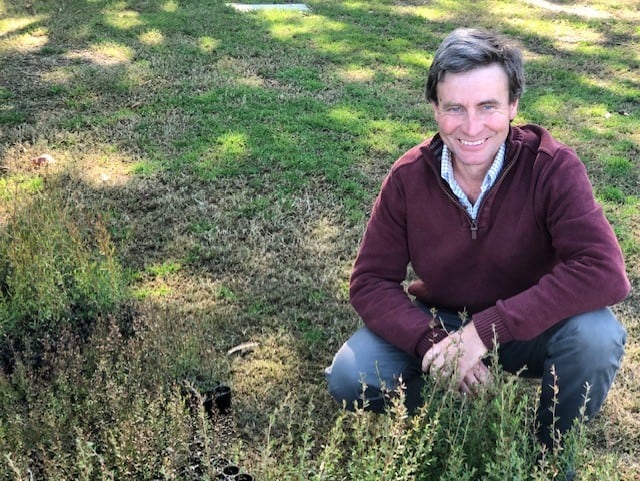Podcast Episode 81: Randy Oliver
Tune in to the Bees With Ben podcast episode 10 where I talk to Randy Oliver of Golden West Bees in North California.

Welcome to Bees with Ben podcast episode 81. Randy Oliver is a commercial beekeeper in California who currently runs around 1,000-1,500 hives with his two sons. He started keeping bees as a hobby back in about 1966 and later obtained science degrees specialising in entomology.
In 1993, the varroa mite arrived in California, and after having his apiary wiped out for the second time in 1999, Randy decided to fight back, devouring every scrap of data he could, in order to learn more about beekeeping and provide beekeepers from around the world with a resource that is evidence-based and scientifically verified, so that they are better able to make sound, practical management decisions.
Randy is a regular contributor to the American Bee Journal, and his website, www.scientificbeekeeping.com contains a wealth of information, in the form of blogs and articles. He has authored books on beekeeping and is a popular keynote speaker at beekeeping conventions, as well as having visited beekeepers all over North America and several other continents.
Due to the time difference, Ben had to get up at 2:30 a.m. to record this podcast! Ben describes Randy as a ‘guru of gurus’ and is really pumped for this episode despite the early start.
Randy says it’s now almond season in California; premium almond pollination forms a substantial part of his business. He says Californian beekeepers are a bit different to their colleagues in other parts of the US. California is not a very good honey producer but has an advantage due to the early build-up and is an important supplier of queens and packaged bees.
Randy tells Ben he had a pretty simple business model that used to work well. The almonds start to bloom in February, and immediately after almond pollination had finished, he retrieved his colonies and split them.
He works on selling 1,000 nucleus colonies a year, and they would all be sold by the end of April, resulting in the vast majority of his income being derived from a three-month period. Any honey was a bonus! Randy also used to take his bees to Nevada for the irrigated lucerne crop, but they pretty much looked after themselves for the rest of the year.
The varroa mite changed all that, as it was impossible to leave bees alone for any length of time without management. There was simply not enough food for the bees in the Californian foothills where Randy resides, so he was forced to experiment with pollen subs, and found that in this way he could successfully keep the bees at home.
Randy informs us that he is currently running an experiment using oxalic acid dissolved in glycerine on cellulose sponges in order to combat varroa mites. He says it is organic, cost-effective and efficacious.
He has also been running a very strong selective breeding programme for varroa-resistant colonies and says he now has 14% of colonies that require absolutely no treatment to stay free from varroa, although varroa-resistance is not yet a reliable heritable trait. He is confident there are no negative traits associated with varroa resistance.
Things get really interesting when Ben asks Randy to wind the clock back about a decade and tell us about colony collapse disorder (CCD). Randy declares that everything said in the media was wrong and that the original cause of CCD was Nosema ceranae (a unicellular parasite) that first invaded the US in 2001. He says that Nosema is the only pathogen to cause bees to disappear and that he managed to duplicate CCD in a field trial by inoculating hives with Nosema.
But by 2008, all colonies highly susceptible to Nosema were wiped out; from 2010 onwards, there were no reports of widespread disappearances, but the loss of colonies due to varroa became the basis of reports of CCD – and varroa was picked up by the media.
Randy stresses that losses due to varroa are all about poor management and blames many well-meaning but inexperienced hobbyists for constructing a breeding ground for the mites.
Randy also talks of the incredible changes to the beekeeping industry in California during his career. Climate change has hit California hard, with floods, record temperatures (high and low) and unseasonal wildfires.
Interestingly, milder winters mean that bears may not enter hibernation; since their feet are in contact with snow rather than the ground, this renders electric fences ineffective and apiaries defenceless. Randy says it’s all about learning how to manage the bees – nature isn’t friendly anymore!
Ben asks Randy of all the research he has conducted, which is the most interesting? Randy thinks for a few moments before replying that right now it would be his pollen sub-trial.
A single trial has yielded ten separate articles, with more to come! He tells Ben that it appears that essential amino acids are critical, but that placement of the supplement is also very important.
Randy’s articles can be found in the Australian Beekeeping Journal (ABJ), or on his website.
_
Listen to the podcast here.


